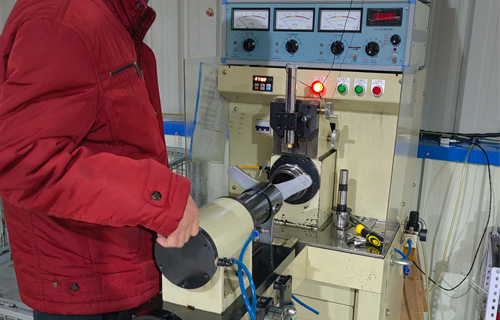
Aug . 15, 2024 10:51 Back to list
Understanding the Role of Tapered Roller Bearings in Managing Thrust Loads in Machinery
Understanding Tapered Roller Bearings and Their Role in Counteracting Thrust
Tapered roller bearings are an essential component in modern machinery and automotive applications. Designed specifically to accommodate both radial and axial loads, they are unique in their ability to handle thrust forces, distinguishing them from other bearing types. This article delves into the design, function, and applications of tapered roller bearings, particularly in relation to their effectiveness in counteracting thrust.
At the core of a tapered roller bearing is a set of conical rollers that are positioned between two tapered surfaces the inner race and the outer race. The design allows for the rollers to seamlessly transfer loads across their contact points, making them ideal for applications where both radial loads (those acting perpendicularly to the shaft) and axial loads (those acting along the shaft) are present. The shape of the rollers not only provides greater surface contact but also enables them to be stacked closely, contributing to the overall compactness of the design.
One of the standout features of tapered roller bearings is their capability to counteract thrust loads. Thrust refers to the force exerted along the axis of a rotating shaft. In various machinery, especially those that undergo high levels of load or speed, the ability to manage thrust is crucial for operational stability and longevity. Tapered roller bearings achieve this by allowing the rollers to adjust slightly in response to changes in load, ensuring that they maintain optimum contact with the races without slipping or binding.
tapered roller bearings are used to counteract thrust

The axial load capacity of tapered roller bearings directly influences their applications in industries such as automotive, aerospace, and heavy machinery. In automotive applications, for example, they are commonly used in wheel hubs and gearboxes where both radial and axial loads are present. The capacity to handle thrust effectively helps in maintaining vehicle stability, improving handling, and reducing wear on mechanical components.
Moreover, the ability of tapered roller bearings to manage thrust is particularly important in heavy machinery used in construction and mining. These machines often face harsh working conditions, including fluctuating loads and extreme environmental factors. Tapered roller bearings contribute to the durability and reliability of such machinery, as they can withstand high loads while maintaining their performance over extended periods.
Another significant aspect of tapered roller bearings is their maintenance and lubrication. Like all bearings, they require proper lubrication to minimize friction and wear. The correct type of grease or oil is essential for the bearings to function effectively, especially in high-speed applications. Additionally, regular inspection and maintenance are crucial for identifying early signs of wear or damage, which can prevent catastrophic failures and costly downtimes.
In conclusion, tapered roller bearings play a pivotal role in modern engineering and technology, particularly due to their unique ability to counteract thrust forces. Their design, which allows for the handling of both axial and radial loads, makes them a versatile choice in various applications, from everyday automotive systems to complex industrial machinery. As industries continue to evolve and demand higher efficiency and reliability, the importance of tapered roller bearings in mitigating thrust and enhancing performance will only grow, securing their place as a cornerstone of mechanical engineering.
Latest news
-
Common Failures in Thrust Ball Bearings and Solutions
NewsAug.22,2025
-
How Tapered Roller Bearings Can Take Shock Loads
NewsAug.22,2025
-
Angular Bearings in High-Precision Spindles
NewsAug.22,2025
-
The Impact of Misalignment on Cylindrical Roller Bearing Performance
NewsAug.22,2025
-
The Role of Cage Design in Deep Groove Ball Bearing Durability
NewsAug.22,2025
-
The Impact of Material Quality on Machinery Bearings’ Lifespan
NewsAug.22,2025
